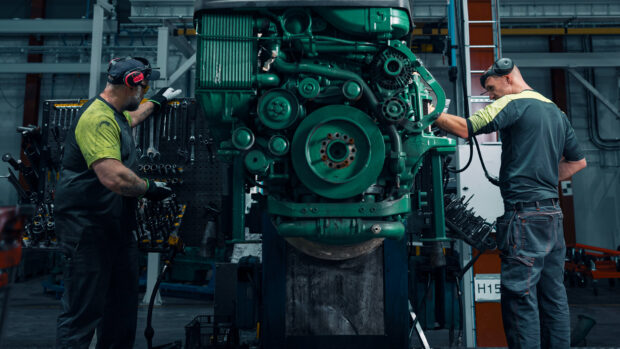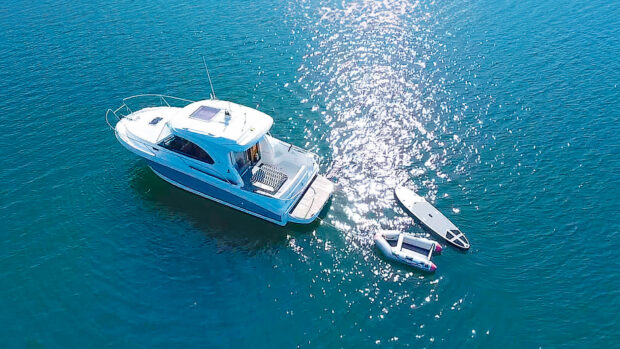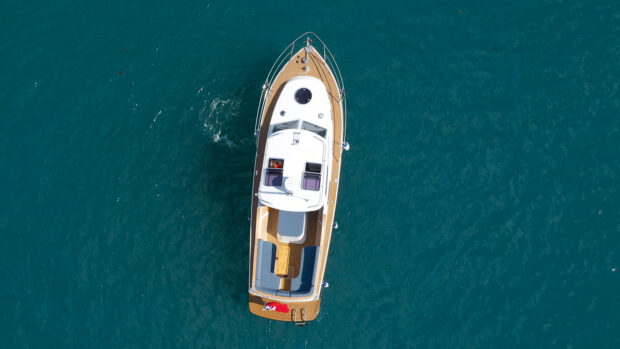Want to move your boat to another country or elsewhere? Adam Fiander takes us through his list of all you need to know about yacht transport
As the name suggests yacht transport is a means of having your boat moved professionally from one location to another. It might be as simple as hiring someone to tow your RIB a few miles down the road or as complex as shipping a superyacht halfway around the world. Either way, it involves a certain amount of research, planning and preparation to ensure it all goes smoothly.
Needless to say, a whole industry has grown up around the business of moving boats, so it pays to know what your options are, what you need to consider and how to make an informed choice when you come to move your own boat.
Why might you want to move your boat?
The number one reason for moving a boat is buying and selling. The chances of finding the exact boat you want in the same place that you intend to keep it are slim to say the least. Even when you buy a new boat, unless it’s small enough for the dealer to deliver on a trailer, the likelihood is that it will involve some form of transport by road, delivery skipper or ship.
The same often applies to selling a boat, although in this case, offering to deliver your boat, possibly as part of the deal, is usually in the hope of achieving a higher price or a quicker sale.
The second most popular reason for moving a boat is to explore new horizons, either temporarily or permanently, often with the added benefit of enjoying better weather and longer seasons. Many owners will have considered this at some point.
Other reasons could be for finding cheaper moorings, lower refit costs or simply for a change of scene.

Semi-submersible service – float on, float off
Why don’t you just move it yourself?
Sometimes that can make good sense if you’re familiar with the boat and have the time and experience to do it yourself. However, a lot of the time, it’s because you’ve just bought a boat that needs moving from where you bought it to your home marina and the prospect of getting to grips with a new boat on a lengthy delivery cruise may prove daunting to some.
One good option could be to hire a delivery skipper to accompany you on the journey so you can lean on their expertise. However, once you’ve factored in the time required, the potential for weather delays, the cost of fuel and visitors’ berths, and the extra engine hours on your boat, you might find that leaving everything in the capable hands of a professional delivery service makes more sense.
What are the main methods of boat transport?
The three main boat delivery options are: transporting it by road on a specially adapted truck or delivery trailer; by sea under its own power using a professional delivery crew; or by ship.

Boats loaded onto a long-distance cargo ship
What destinations are open to me?
Almost anywhere is possible if it’s politically feasible but the most popular routes are coast to coast around the UK, mainland Europe (especially the Mediterranean), Scandinavia, the Caribbean and the US East Coast. Some shipping companies will also cover longer distances to South America and the Pacific, including Australia, New Zealand and SE Asia.
Ocean crossings (as opposed to coastal deliveries) are limited by a boat’s cruising range so a common scenario is for delivery by road or professional crew to a named port, where it can then be loaded onto a trans-oceanic ship.
Article continues below…
Everything you need to know about bow thrusters & stern thrusters

Everything you need to know about Watermakers
Are some means of transport better suited to different sizes of boat?
All types of hulls can be delivered by all methods but there is a size limit to what can be transported by road. The limiting factor on the size of boat carried is the standard motorway bridge height in the UK and Europe, which restricts delivery by road to a maximum of 5.3m above the ground when loaded.
Specialist delivery trucks are designed to run as close to the ground as possible to make the most of this height allowance. Removing propellers, rudders, radar arches and in some cases entire flybridges can also enable surprisingly big boats to be transported by road in the UK and Europe.
Being based in Oundle, Fairline has to transport all its craft by road, including (for many years) the Squadron 78, which was trucked out of the factory with its flybridge removed before being reassembled in Ipswich.

Road trailers are as low as possible
What are the pros & cons of going by road?
With no engine hours or wear and tear on your boat to think about, delivery by road can make a lot of sense. Quick turnaround times are another big benefit with no waiting around for ships to arrive, relatively quick loading and unloading times, and little chance of unforeseen weather delays. A boat could potentially be loaded in the UK on a Monday and delivered to Palma, Mallorca, the following weekend.
The main issues to consider are the time and cost to organise any legal permits required. For instance, any boat with a beam of more than 3m requires a permit and an escort vehicle to accompany it. If it’s over 4.5m, it needs two escort vehicles and if it’s over 5m, it needs an official police escort.
There is also the cost and hassle of preparing the boat for transport and the risk of things like radar arches or sensitive electronic equipment being damaged during the removal process.
What about delivery crews?
Over short to mid-range distances, this is often the most cost effective means. Provided the boat is seaworthy and properly equipped for the journey, a professional delivery crew should have no trouble cruising it to where you want it.
The other big benefit for a new or inexperienced owner is the chance to take part in some or all of the journey. It’s a great way to familiarise yourself with the boat and flag up any minor issues that need sorting before you get to your destination.
The only downsides are the extra engine hours and wear and tear it may add to your boat, especially over longer distances, and the possibility of weather delays and unforeseen costs due to extended marina stays, unexpectedly high fuel costs or mechanical breakdowns and repairs.
And shipping?
Clearly some routes are simply not possible by road or delivery crew due to the distances involved. In these cases, shipping is the only option but it’s also the most environmentally friendly method, emitting less CO2 per tonne-mile than by road or under its own steam, due to the quantity of other boats or goods being transported on the same ship. It’s especially effective when multiple boats need to be delivered to the same destination or event, such as a boat show. It also avoids unnecessary engine hours.

Bridge heights on motorways are the limiting factor with road transport
Possible disadvantages include having to wait for a suitable shipping slot and unforeseen deviations caused by political tensions, piracy, blocked canals or exceptional weather events.
While very rare, it’s not unheard of for boats to be damaged or even lost overboard during particularly violent storms.
What’s the difference between a charter, liner and a tramper delivery service?
A charter delivery vessel is chartered to transport cargo. It requires an element of understanding when sailing non-standard routes and arriving at potentially unfamiliar ports. A liner is a more standardised service with vessels owned or chartered for regular routes, with fixed port rotation and published dates of calls at the various ports. A tramper is a ship with no fixed routing or itinerary, available at short notice to deliver cargo from any port to any port.
Which method is more cost effective?
Since each method of delivery differs significantly, a simple cost to distance formula doesn’t really apply. But if we take a hypothetical delivery of a 39ft cruiser from Southampton to Palma, Mallorca, it will take a professional delivery crew of two people around eight days to cover the 1,800nm. For this reason, delivery by road, even with the 112nm ferry crossing from Barcelona to Palma and the prodigious 5-6mpg fuel economy of a low-loader, is almost certain to cost less.
The same port-to-port delivery by a transport ship is likely to cost marginally more than by road delivery, but is arguably a simpler and more efficient method.
Has Brexit complicated things?
Brexit did initially create a lot of uncertainty and a number of barriers for moving a boat abroad but four years on, the process has smoothed considerably and we do now know where we stand. For owners looking to move their boats from the UK to Europe, the Temporary Importation scheme allows non-EU residents to bring a boat into Europe for up to 18 months (24 months if the boat is laid-up), without having to pay VAT on the value of the boat. After that term has elapsed, you will need to move (and prove!) that your boat has been out of the EU for a minimum of one day, before you can legally bring it back into the EU and start the 18-month cycle all over again.

Craning the boat on and off is a professional job, but it’s still a nerve-wracking watch
Are some routes cheaper at different times of year?
Prices for road delivery and professional delivery crew are normally stable throughout the year, with the busiest times at the start and end of each season. Some yacht transport routes become more affordable during off-peak periods but often at the cost of less frequent departure dates.
How much notice do transport companies tend to need?
Normally you would need to give 2-3 weeks notice for delivery by road or 3-6 weeks if it’s a wide load and special convoy permits are required. Professional delivery crews are not tied to departure schedules so, providing the vessel is seaworthy and its safety equipment complies with the Life-Saving Appliance code, this can be as short as 12-24 hours.
Depending upon demand, ship transport is normally up to eight weeks notice for lift on, lift off and RoRo during normal times, and for the largest loads requiring heavy lift, or semi-submersible vessels, it can require up to 12 weeks notice on busy sea routes.
How do I prepare my boat for transport?
Everything inside must be secured down. Dinghies, wind-generators, solar panels and anything that might come loose or be outside of normal road-width limits must be removed. Send photos or a video before the boat is collected to identify if anything less obvious might need removing.

What about by sea?
Prior to loading on a transport ship, the hull must be in good condition. Hatches, windows and doors must be fastened and loose items above and below deck either removed or secured. Water should be drained from tanks and heaters and fuel reduced to a minimum, leaving just enough to move it to and from the marina. Batteries need to be disconnected and connections insulated. Fragile or sensitive equipment, such as electronic and navigation instruments, should be protected. Lastly, the hull should be clean to prevent the spread of invasive species.
And by delivery crew?
For delivery by professional crew, stow all personal items and photograph the location of the boat keys and any equipment such as seacocks, circuit breakers and anything else that the crew may need to use so you can send it to them in advance. For your own personal record, it’s also worth documenting the condition of the boat by taking photographs and video.
Is insurance included or is it my own responsibility?
Road delivery companies will have ‘goods in transit’ insurance in place, and transport companies will have their own cargo insurance policies, but it remains a strict requirement that every boat being transported must maintain its own policy for loss/damage in addition to the transport provider’s insurance. For delivery by professional crew, third-party insurance is required to cover the temporary skipper and crew. Specific transport insurance can sometimes be arranged by the service provider, but it can be expensive.
What assurances do I have that my boat will be loaded and unloaded safely?
Ship transport companies provide long checklists and lifting or stowage plans to minimise errors during loading and unloading. Skilled engineers, loadmasters and load surveyors ensure that yachts are located correctly and secured to appropriate cradles with mechanisms that minimise movement and prevent damage. Regular inspections and safety standard protocols are carried out at the loading and unloading stage and during passage. For peace of mind, most companies will provide updates and progress reports during long-passage deliveries.

Do I need to be present?
No, it is not an essential requirement to be present at the time of unloading but having a representative on hand to address any concerns or to receive instructions is a good idea. Marina storage at ports is not always guaranteed or possible, so you will need to have someone to collect the yacht after discharge.
Should I use a broker or deal direct?
This comes down to individual choice. Dealing direct cuts out the potential for miscommunication and allows for more customised solutions and greater transparency.
However, in terms of managing the entire process, brokers often have a wider field of contacts for additional services, such as stevedores, divers, surveyors, cradle builders, customs brokers and onward delivery crews.
Who are the main players?
The companies that have contributed to the information contained within this report are DYT-Sevenstar, Peters & May, Complete Marine Freight, Boat Transport Ltd, Coast2Coast and Universal Maritime.
 If you enjoyed this….
If you enjoyed this….
Motor Boat & Yachting is the world’s leading magazine for Motoryacht enthusiasts. Every month we have inspirational adventures and practical features to help you realise your sailing dreams, as well as tests and news of all the latest motorboats.
Plus you’ll get our quarterly Custom Yachting supplement where we share the last on offer in the superyacht world and at the luxury end of the market.
Build your knowledge with a subscription delivered to your door. See our latest offers and save at least 30% off the cover price.



 If you enjoyed this….
If you enjoyed this….





